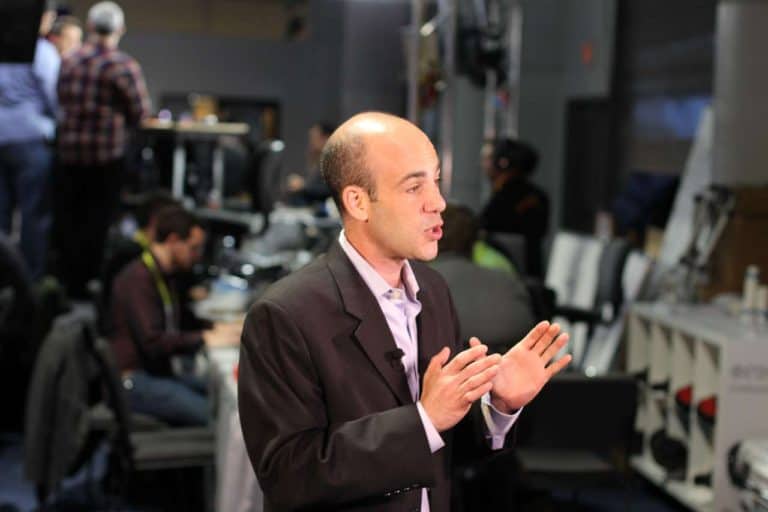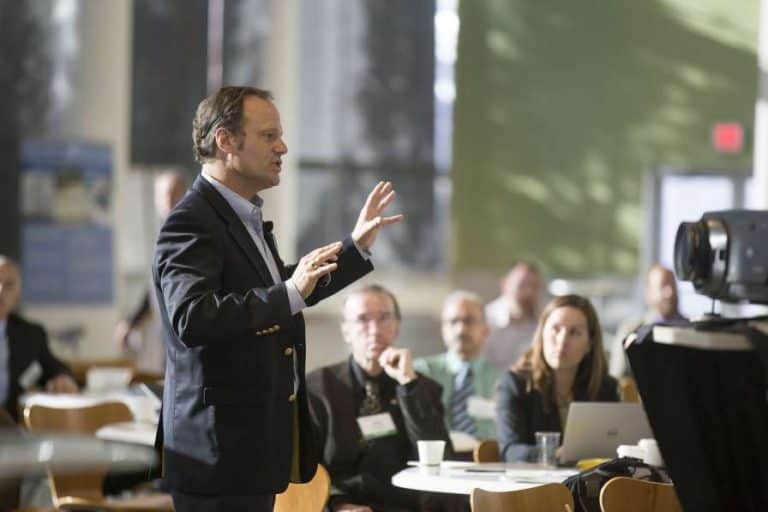3 KEY Things For Delivering a Successful Speech
Have you ever had to give a speech and have no idea how to direct their thoughts or start talking? In this article, we will discuss in a straightforward way how to work the oratory to develop the ability to speak well with different audiences, arousing their attention, respect, and provoking reflections.
Speeches are moments that are part of our routine, whether it’s graduation, weddings, anniversaries, and company gatherings, meetings with co-workers, social events, and manifestations.
What is a Good Speech Delivery?
A good speech does not use sophisticated words; the words may even seem the most critical factor in speeches, but the great speakers are those who focus less on each word and more on the idea they want to convey.
Good speech delivery can persuade or transmit a message in a convincing way by adapting to the public to whom it will be presented.
Primary Purposes of a Speech
- To Inform
- To Persuade
- To Instruct
- To Entertain
- To Appreciate
Highly Recommended Article: 7 Elements of Public Speaking
3 KEY Things For Delivering a Successful Speech

1. The Message We Want to Deliver
Nick Morgan, author of the book “Power Cues: The Subtle Science of Leading Groups, Persuading Others, and Maximizing Your Personal Impact.” (Signs of Power: The Subtle Science of Group Leadership, Persuasion, and Maximization of Its Impact”), argues that a great speaker should have regard for the public and should be prepared to talk to particular types of audience.
“A speech is not ours entirely, and it is partly ours, the audience and the occasion, the circumstances.”
As the speakers, we must ask ourselves:
- Who is the audience?
- What do you want?
- What do we fear?
- For what purpose have you invited me to speak?
- What aspect of my speech will be most relevant.
We have to consider the current situation, something that the majority of the audience knows, topics and points that should not speak, and think about what the audience needs to hear.
2. The overall Structure and Sequence of Events
To elaborate on an attractive speech, we must devote time to write a script detailing everything we would like to say during our speech.
- Define the theme and focus of our speech;
- Then seek information and references on this subject to support our talking.
With all the information in hand, we begin to structure our speech, dividing it into three central moments:
- Introduction
Remember that the introduction is when you will gain (or not) the attention of people, giving importance to the beginning of our speech, thinking of forms interesting to start your speech.
- Content Developing
According to Scottish philosopher and educator George Campbell, speeches serves four main objectives:
- Stir up the imagination;
- Foster understanding;
- Arouse passion;
- Influence determination.
So our content development should be guided following the points above, create a background for the task: write down the theme, the general and specific objectives, the main topics, and, finally, the conclusion. In this way, you will have a coherent flow, with less chance of getting lost in ideas and a greater probability of making ourselves understood by the audience.
- Conclusion
The conclusion of a speech is also a crucial step. Generally, the most significant and inspirational communicators of history destined their speeches’ final moments to increase the burden of emotion to awaken people’s feelings about what was said.
3. Practice your Speech
With the script in hand, it’s time that we practice our speech, read it aloud until we get familiarized with the text, use this step to identify:
- Errors, cacophony, over-repeated words, among other things, improved.
- During our rehearsals aloud, we should take the opportunity to calculate the duration of our speech, ensuring that it is not too long or too short;
- With practice, start speaking our speech without reading everything we have written, and eventually, we’ll have the essentials.
Some situations, such as graduations, still allow the speaker to read his speech. In others, the ideal is for us to give our speech without the need to read the full text, so it’s good to be prepared for whichever scenarios.
Golden Tip: Practice your speech in front of other people and ask for the point of view. An outside view helps a lot in our speech improvement, ensuring it’s perfect on the event’s day.
Importance of Delivery in a Speech
A Speech is important because it is a way to communicate, establish connections, and can in many ways motivate several people to take productive attitudes toward themselves and the World. Therefore Speech Delivery is paramount for succeeding in selling ideas.
Speech Delivery Techniques
Using Relatable Quotes
When making the quote, we need to remember two essential things:
- Quote the source of the statement;
- Relate the citation to the central theme of the presentation.
For example, the president of a company can talk about significant changes happening within the organization, citing the famous phrase of Franklin Roosevelt, spoken during the Great Depression, to calm the nation:
“The only thing we have to fear is fear itself.”
Present-Future Technique
A good speech inspires, regardless of context, and a graduation speech can be inspiring, a wedding toast, too. It will all depend on the content and, most importantly, how we present the speech.
The Present-Future technique is to make the public visualize a real future because of an attitude we take today.
For example, “Today, we are newly graduated doctors because we follow our vocation, tomorrow, we will be happy professionals who will take care of people’s lives.”
In the summary form, we mean that by listening to our intuition and graduating from what we love – medicine; to dedicate ourselves and today becomes a tomorrow rewarding.
Using Humor in your speech.
A touch of humor (tasteful, of course) is a great way to break the ice with the audience, relieve tension and connect with everyone. As the example given above quote, the key to success is to make the joke stand linked to the topic to be discussed.
Otherwise, it will serve as a distraction and could divert the public’s attention, regardless of the joke’s tone.
Golden Tip: If that’s not your style, you can address the other tips in this article.
Tell a Story with Emotion
During the presentation, telling a story is another very clever way to start a speech. After all, stories connect people in a compelling way.
As in the case of jokes, our story needs:
- Bridge or contain a message that can link the introduction to the content of the presentation.
An excellent way to use storytelling is to use an “imaginary” scenario, but that is the history of life that people can relate to; this will leave interested participants and be able to identify themselves better with us.
Examples of Great Leaders who are well known for their Speeches
Sir Winston Churchill
The former prime minister of England was characterized by his consistently accurate comparisons, which facilitated the understanding of different audiences on complex topics.
As Churchill himself defined in one of his many speeches in the British parliament:
“A proper analogy connects the most distant spheres.”
When someone can bring elements that bring people closer to reality, it is possible to draw parallels with subjects, sometimes little known by them.
Nelson Mandela
Ex-President of South Africa and prominent leader against the known segregation regime known as Apartheid, Mandela had at the pace the highest quality for his excellent conversation.
Through dramatic pauses, he could capture everyone’s attention and give due importance to what was being said.
The appeal could be easily noted in Mandela’s inaugural speech as President of Africa South in 1994 – mainly by listing with adjectives the government’s objectives.
If you search your lines on YouTube, you will notice that the African leader also has the custom to always cite examples in the group of three. It’s not a pure coincidence.
The three is a powerful number and can be easily remembered by people; in one of their demonstrations against apartheid, Mandela spoke:
“For a complete, just, and lasting peace.”
Barack Obama
Another leader who has made a name for his great speeches while in charge of his was the United States president, Barack Obama.
Obama, in turn, had as its main feature the emphasis used on certain words during a sentence, those taken as the most important, which represented the central idea of everything.
An example of this is the slogan for his 2008 presidential campaign entitled “Yes, we can.”
The strategy was a way of valuing the American people’s importance in their search for solutions to overcome difficulties, but not only that. The feature was also a way found by Obama not to pose as just more, among others, trying to make a difference.
Steve Jobs
The creator of Apple trained eight hours before presenting any of their products; the training was also a way for Jobs to improve his performance as a speaker. Each word of his speech was meticulously tested to assess the impacts it could cause.
The care with the speech was practically the same adopted with his inventions, highlighting the importance that the entrepreneur gave to communication.
| Tips to Achieve Successful Speeches | ||||
| Technique | Impactful Phrases | Statistics | Examples | Rhetorical Questions |
| How to do it | This technique consists of giving a brief, thought-provoking statement, which will set the tone of thethe theme of the presentation. | We can use a slideshow than a brief in the opening statement so that our speech doesn’t get too many details easy to forget. | Do this by describing a situation that illustrates the subject of your topic, especiallyabout the central message. | At the beginning of the speech, we can use a striking and bold phrase and use the techniqueof the silence later, increasing the effect of the words. |
| Effect | It leaves the audience excited and attentive. | Will show the public an immediate value in their knowledge, credibility to our message and leave them moreinterested parties throughout our presentation | It helps clarify our message. | This schedule will make the audience anxious and attentive. |
Conclusion
Discourse is any situation that involves a set of ideas organized through language to influence the reasoning, or at least the feelings of the listener or reader. Discourse is a form of communication within a particular context and concerns the speaker, the speaker, and the speaker.
Reference and Further Reading
Hamilton.EDU Tips for Effective Delivery
OpenLib.EDU Practicing for Successful Speech Delivery
AMADEBAI, Emídio. 8 Awesome Persuasive Speech Techniques. AcethePresentation.
AMADEBAI, Emídio. 9 Basic Elements of a Great Persuasive Speech. AcethePresentation.
AMADEBAI, Emídio. 11 Best Body Language Tips for Engaging Presentations. AcethePresentation.








